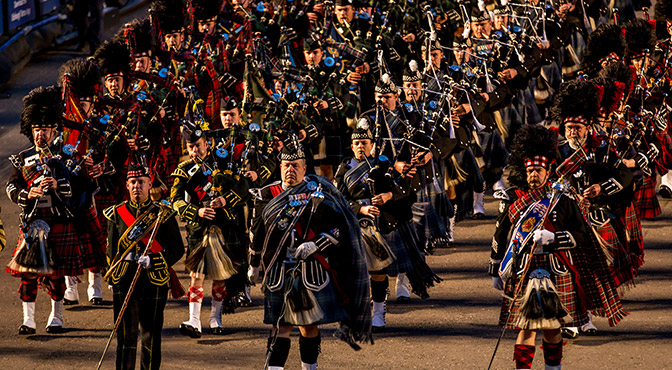Piper Robin Andrews contacted Piping Press with the following message: I wonder if you are aware of the Manifesto for the Correct Placement of Beatings in Highland Bagpipe Music? Please do not ignore this issue. As things are, pipe bands have the dubious honour among musical traditions of consistently playing part of their repertoire incorrectly, even at the highest levels of competition. In addition to this, the error is being passed on daily by teachers, band leaders and music publicists such that the next generation of players are being unknowingly misled. I believe it is the responsibility of anyone in a position of leadership or education within the pipe band world to investigate and understand this issue, and to take action to address it. I’m hoping this will reach people with the right combination of prestige, professionalism, humility and care to champion this cause and do what is needed to rectify this long-standing blight on an otherwise wonderful and venerable tradition. Could you be one of those people? Could you pass this on the anyone else who might be interested? The Editor writes: More than happy to do that Mr Andrews and you will be pleased to note that our Bagpipe Tutors 1 & 2 are not guilty of ignoring the anacrusis…..
Manifesto for the Correct Placement of Beatings in
Highland Bagpipe Music
By Robin Andrews
It has come to our attention that many bands are playing a portion of their repertoire with the drum part out of phase with the bagpipe melody. This results in some tunes not being presented in their fullest glory since the intended rhythmic emphasis is not adhered to.
The main place where this occurs is in tunes with a time signature of 3/4 or 9/8. In many of these tunes there are notes preceding the first strong beat of the melody which form something called a ‘pick-up’ or anacrusis. If the correct use of standard musical notation is adhered to, these initial notes should be written before the first bar line, with the first strong beat of the melody placed directly after the bar line.
For example, the first two bars of The Green Hills of Tyrol are often notated like this:
When in fact they should rightly be notated like this:
Whilst the first version makes some sense in that the tune starts ‘at the beginning’ and appears to solve some problems with repeats, there is the unfortunate downside that every melody note is in an incorrect position in relation to the implied STRONG-weak-weak rhythm of the crotchet beats between each pair of bar lines. As a result of this, many bands have come to play their drum parts one beat ahead of the melody, such that rather than supporting its rhythmic structure, they instead give a strange syncopation with the strong beats never coinciding with the strong beats of the melody.
To give a very clear illustration of the difference, imagine singing Amazing Grace with the emphasis on the first syllable ‘A’, rather than the second syllable, ‘MAZE’. This is directly analogous to the way retreats are often played, and yet a moment’s thought will clearly show it is neither natural nor musical to use this pattern of emphasis.
[wds id=”6″]
One of the main sources of this now widespread habit is summarised below:
- In Army Manual Book 1, 1934, the pipe parts were notated correctly and the drum parts wrongly.
- In Army Manual Book 2, 1936, they kept the wrongly notated drum parts, and made the pipe parts wrong too to match.
In the Preface to Book 2, the matter is referred to as a small mistake due to a misunderstanding. As a result of this ‘small mistake’, the practice of playing the drum parts out of sync with the pipes has become so widespread that many people are not aware that it is happening and are not open to the possibility that there may be an issue here that needs addressing.
However, many of us do recognise the problem and would like to make a contribution to the wonderfulness of Highland bagpiping by encouraging people to play these tunes with the correct emphasis and drum part synchronisation. Once the issue is recognised, the solution is quite simple.
It will require some communication between piping leaders and drumming leaders as to how they want to address it. Perhaps the easiest way to address the immediate problem is to have the drum part begin one crotchet later than usual, or have the pipes begin one crotchet earlier.
Beyond the modification of performance within existing bands, there is also to issue of the widespread publication in print and online of scores with the incorrect notation. As a longer term goal, it would be good to see these replaced with the correct versions. Quoting three times World Bass Section champion Craig ‘Hoss’ Colquhoun: ‘The difficulty in 3/4 marches is that 90% of them in the Scots Guards books are written incorrectly. They have the pickup notes to the melody written as the down beat. The ones in there that were pencilled by G.S.McLennan have it right.’
As a final note, please understand that the intention of this manifesto is not to attribute blame or to criticise. Trying to change long-established habits within communities is not an easy task and is often not initially met with appreciation. Given that there is so little enjoyment to be had from the process, please consider that we embark on this because of a deep love and respect for the Highland piping tradition and not for reasons of personal gain or need to be right. We invite you to explore the facts of the matter with an open mind and to draw your own conclusions.
• Anyone with thoughts on this issue is invited to comment below. Read more here. Check out this lesson from bass drummer and piper Gordon Bell on YouTube.
[wds id=”3″]
